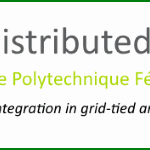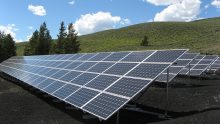
The Paris climate negotiations have exceeded most expectations, concluding in an ambitious global agreement on limiting carbon emissions to restrain the impacts climate change. The agreement has several important aspects including a commitment from developed countries to a significant sum of $100 billion per year to support the transition of developing countries to a low-carbon development trajectory, and for adaptation measures to moderate the impacts of climate change.
This financial commitment is an important part of the agreement. Its successful and effective deployment is necessary to achieve the emission reduction objectives. One of the main sticking points during the climate negotiations has been how to bridge the gap between climate objectives and developments objectives in emerging markets. This includes supporting access to energy in regions such as Africa that currently have limited and expensive access to energy for much of the population, but doing so in an environmentally sustainable manner.

Photo Credit Surfnico under CC 2.0
To have the largest impact, a large part of this climate finance should support the transformation of energy systems from fossil-fuel based, centralized power generation to smart, renewable-based localized power generation. This involves the implementation of renewables at a local level that integrate control and monitoring technology to optimize a system including renewable generation, demand management and control, and energy storage.
Renewable microgrids are at the heart of this energy transformation with the potential to fundamentally alter the dynamics of the power sector. This transformation will impact communities and industries globally, and holds tremendous potential to achieve the reductions in carbon emissions necessary to limit the risks and impacts of climate change.
Renewable microgrids are a rare solution that can support economic development through electrification and increase the adoption of renewable energy to reduce carbon emissions. In addition, they provide many benefits to the communities and power end-users that adopt them. Microgrids avoid the cost and burden of investing in the grid infrastructure of a centralized power system by generating power locally. They also empower local communities by creating employment through the use of local labour and by reducing dependence on external energy supplies. Finally, they can provide increased system resilience that can ensure the availability of power following storms or natural disasters.
Not only do renewable microgrids provide significant benefits to communities and end-users, they are cost-effective relative to fossil-fuel alternatives. This is especially the case in areas where access to grid power is not available or of low quality. Compared to diesel generation, renewable microgrids can offer a pay-back in the order of 5-8 years. Furthermore, the capital required for grid investment and grid upgrades can be better allocated to local power generation and integration through microgrids. This required capital could be in the order of tens of billions of dollars just for Africa.
Deploying the significant amounts of money committed bears the risk of misallocation of resources, loss to corruption and supporting inappropriate technologies or projects. To mitigate these risks, this climate finance should be focused on multiplying the capital available to projects by addressing the barriers and risks limiting finance for microgrids. There are several options to achieve these objectives focused on reducing the cost of capital for projects, including –
- Providing insurance to cover the credit risk of local utilities or energy-buyers
- Providing guarantees to cover country risks in frontier markets
- Financing pilot projects that demonstrate new technologies, applications or new markets
- Providing institutional weight and legitimacy to avoid corruption and extractive regulatory changes
Renewable microgrids require significant capital to cover the upfront equipment investment and climate finance can support both climate objectives and development by investing resources in the sector. Reducing the cost of capital for projects in emerging markets will accelerate the adoption of renewables as well as increase the market for which the technology is cost-effective. These benefits will become self-reinforcing as greater adoption will drive down costs and increase investor comfort, leading to better project economics and further adoption.
The significant amount of climate finance agreed to during the Paris climate negotiations has the potential to drive the fundamental change in the power sector necessary to achieve the carbon emission targets. Renewable microgrids are a technology that is appropriate and cost-effective for achieving carbon reductions and is especially suited for emerging markets. Investment and financing is critical for the sector and a strong and rapid deployment of funding could set the basis for the transformative microgrid technology to take root, with impressive results even in the short term.






